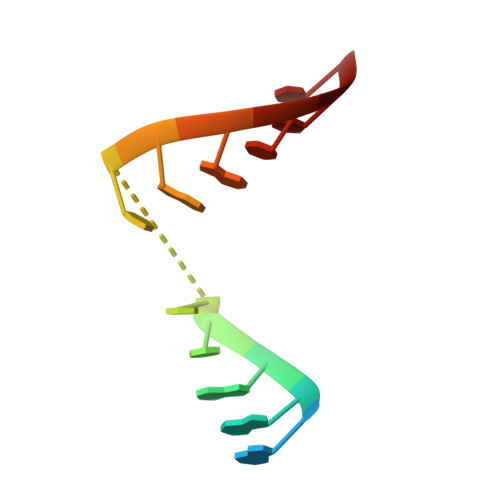Amides are excellent mimics of phosphate internucleoside linkages and are well tolerated in short interfering RNAs.
Mutisya, D., Selvam, C., Lunstad, B.D., Pallan, P.S., Haas, A., Leake, D., Egli, M., Rozners, E.(2014) Nucleic Acids Res 42: 6542-6551
- PubMed: 24813446
- DOI: https://doi.org/10.1093/nar/gku235
- Primary Citation of Related Structures:
4O41 - PubMed Abstract:
RNA interference (RNAi) has become an important tool in functional genomics and has an intriguing therapeutic potential. However, the current design of short interfering RNAs (siRNAs) is not optimal for in vivo applications. Non-ionic phosphate backbone modifications may have the potential to improve the properties of siRNAs, but are little explored in RNAi technologies. Using X-ray crystallography and RNAi activity assays, the present study demonstrates that 3'-CH2-CO-NH-5' amides are excellent replacements for phosphodiester internucleoside linkages in RNA. The crystal structure shows that amide-modified RNA forms a typical A-form duplex. The amide carbonyl group points into the major groove and assumes an orientation that is similar to the P-OP2 bond in the phosphate linkage. Amide linkages are well hydrated by tandem waters linking the carbonyl group and adjacent phosphate oxygens. Amides are tolerated at internal positions of both the guide and passenger strand of siRNAs and may increase the silencing activity when placed near the 5'-end of the passenger strand. As a result, an siRNA containing eight amide linkages is more active than the unmodified control. The results suggest that RNAi may tolerate even more extensive amide modification, which may be useful for optimization of siRNAs for in vivo applications.
Organizational Affiliation:
Department of Chemistry, Binghamton University, The State University of New York, Binghamton, NY 13902, USA.















